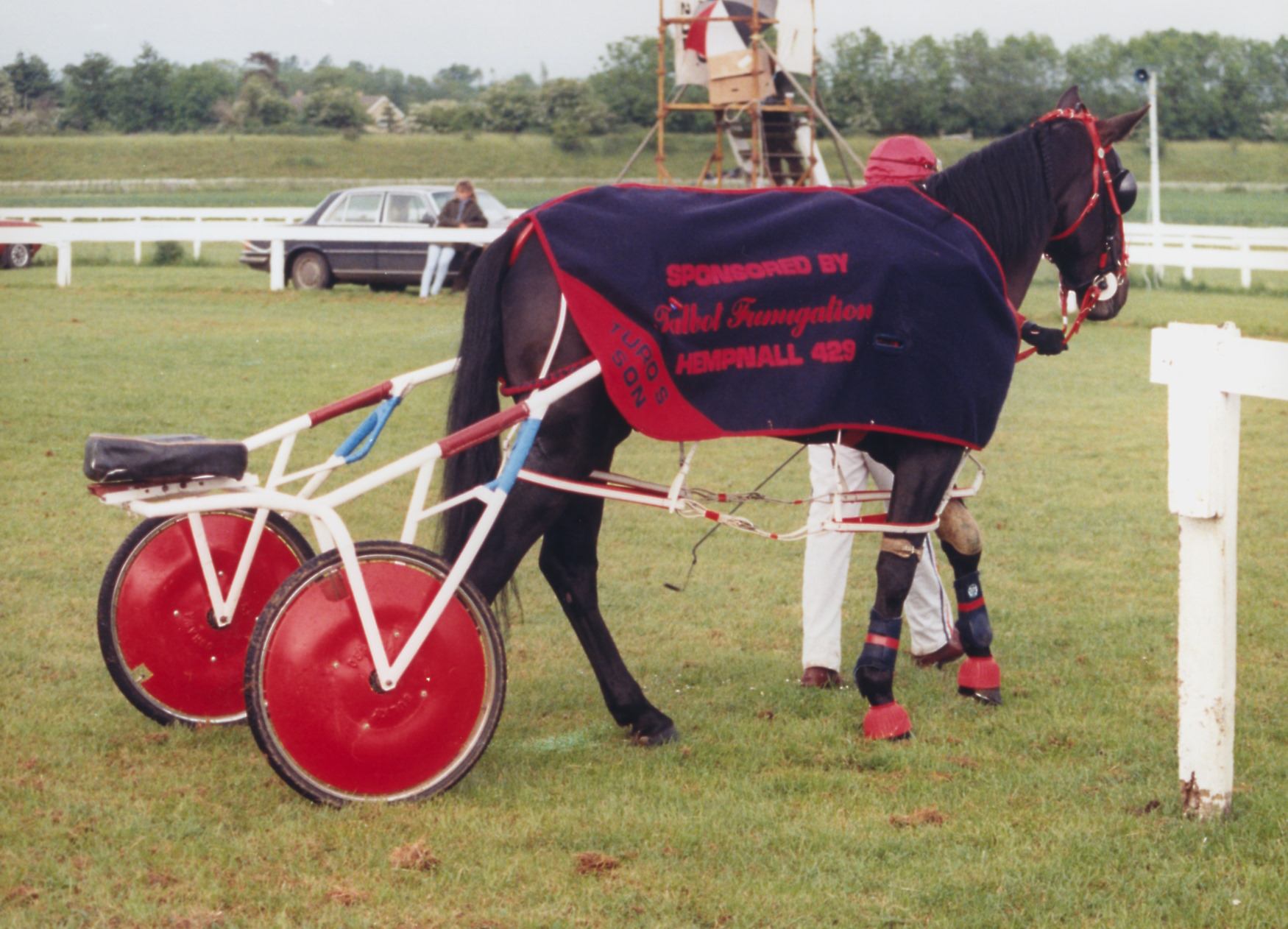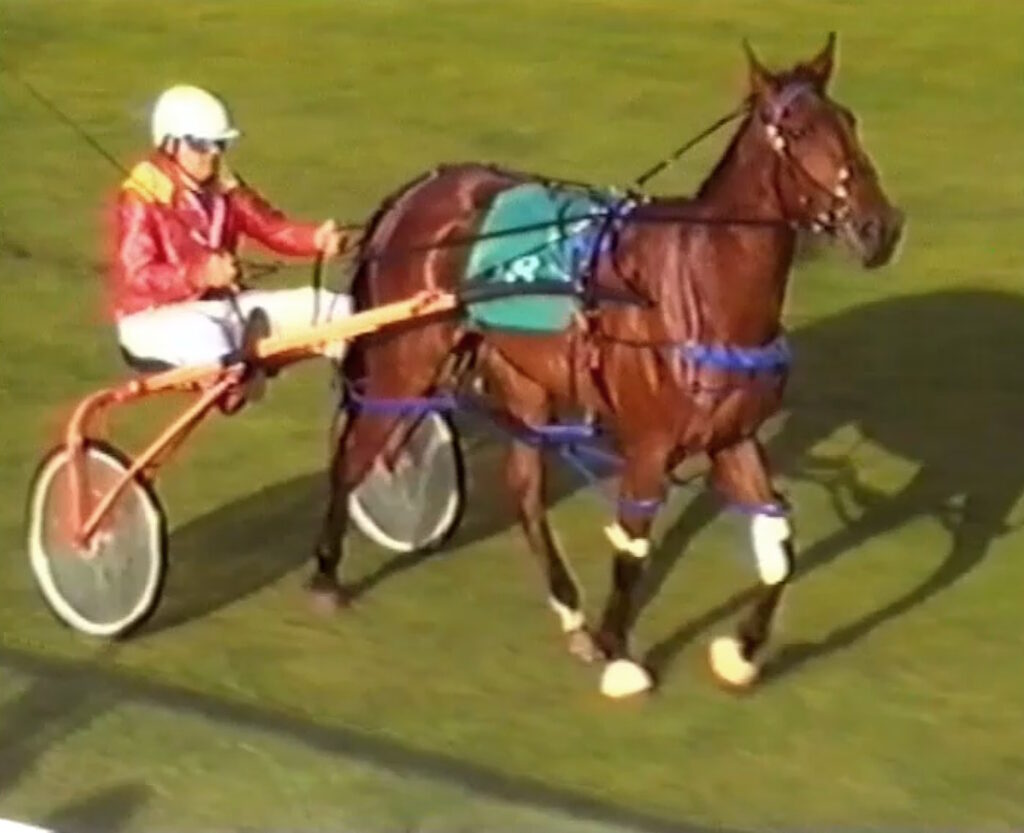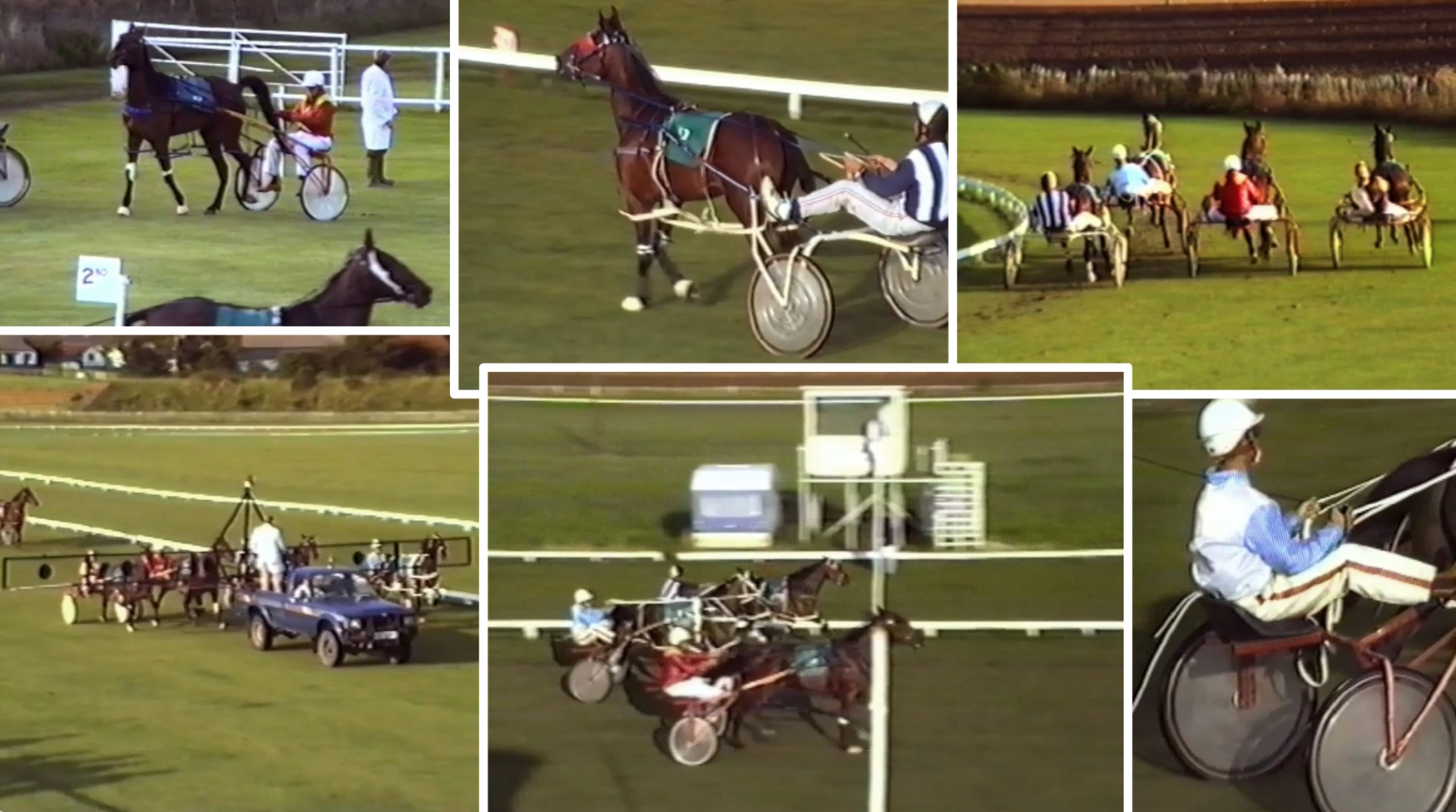

Background map copyright of OpenStreetMap
“Harness Trotting” is a form of horse racing where the horses race at a specific gait, pulling a low two-wheeled cart called a sulky – which is where the jockey sits. The jockey’s eye-line is about level with the top of the horse’s back!
This took place in Wreningham between the early 1980s and the mid 1990s on a grass course laid out at The Poplars (Poplar Farm) just off Ashwellthorpe Road.
The oval grass track straddled the Wreningham / Ashwellthorpe parish boundary and twice round the circuit was measured at 1 mile and 13 yards.
The sport is much more common in the USA. In the UK, further information on Trotting (and Pacing) Races can be found here.
Wreningham trotting races took place during the summer months and attracted visitors from all over south-east England.
A carnival atmosphere merged with alcohol and professional gambling – not to mention the operation of a robust public address system. The latter made its presence known across wide areas of the village!
The inaugural race meeting was on Thursday 28th May 1981 – with a further six meetings in that year. There were typically 6 races per meeting and at the conclusion of the first season there was a celebratory barn dance at The Poplars.

The following year saw twelve meetings whilst, in 1983, it expanded to fifteen. The expansion of the season allowed the organisers to build their confidence and experience. In addition, due to the requrement for both betting and alcohol licenses, the district council needed to assure themselves that the granting of these licences remained appropriate.
As far as the gambling was concerned, bets started at £1.
A further perspective

Part of a race commentary
Trotting races have a “running start”; with the horses first lining up behind a motor vehicle fitted with a wide “gate” on its rear, blocking the way of the participants. The vehicle moves off, building up speed with the riders following. Racing commences after the gate crosses the start/finish line – with the motor vehicle peeling off before the first bend. Horses and jockies then race each other round the course for two circuits. The first to arrive at the finish line is declared the winner – subject to the stewards approval! In each race, the steward follows the action by being driven round the inside of the course alongside the competitors.
Jockeys wore individual racing colours – just like at other types of horse race meetings.
The photographs show the Wreningham course set out with white wooden rails – again, just as it would be at other horse racing venues; although, here, the course rails were set relatively low to the ground.

In the mid-1980s, the submission to the BBC Domesday project described the “Wreningham Raceway” in the adjacent terms.
This image is BBC copyright reproduced courtesy of the British Broadcasting Corporation. All rights reserved.
Going to the Dogs?
Spurred on by the success of the trotting track, in 1983, promoters Mervyn Philpott and John Old wanted to expand the operation to include greyhound racing. Farmer, Robert Bothway was also involved because it would be on his land.
In autumn 1983, a planning application was lodged with the district council to add a greyhound track inside the central (unused) area of the oval trotting track. This would be achievable because dog tracks are relatively small. The promoters envisaged between 75 and 104 meetings per year – each attracting about 400 people per meeting, arriving in up to 200 cars. Apparently, the plan included the construction of floodlights together with a permanent clubroom.
Residents of both Ashwellthorpe and Wreningham made their views known to the press – and they were generally unhappy; parish councillors in both villages had issues with the plan, too.
Extensive records in an Ashwellthorpe scrapbook have provided much of our information; these suggest that Ashwellthorpe was the more prominent village in making its views known!
A packed public meeting was held in Ashwellthorpe Village Hall on the Wednesday 9th November 1983 which was also attended by Robert Bothway and the two promoters. Robert Bothway, who was due to attend an equivalent meeting at Wreningham Village Hall a few days later, was reported to say he would withdraw the planning application if Wreningham’s views lined up with Ashwellthorpe’s.
The second meeting, at Wreningham, confirmed the high level of objection and the planning application for the dog track was quickly withdrawn.
